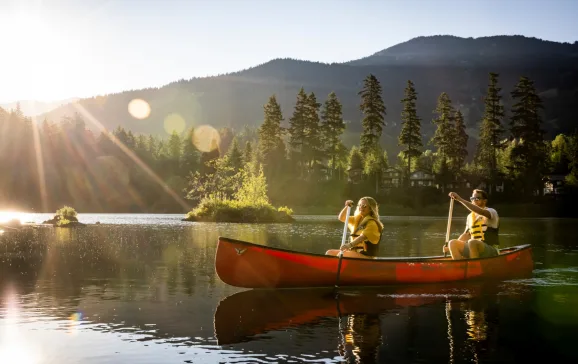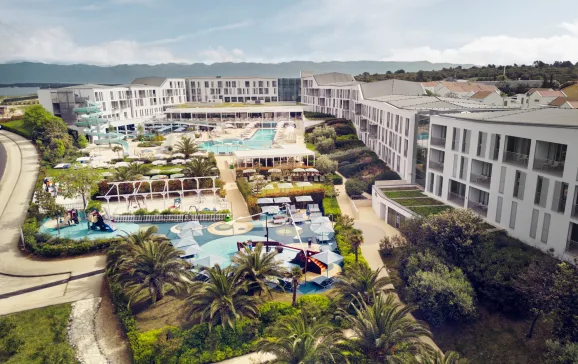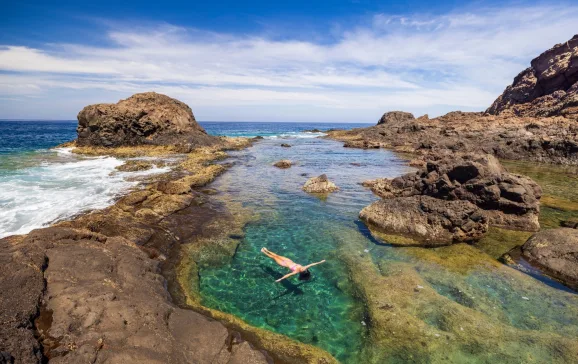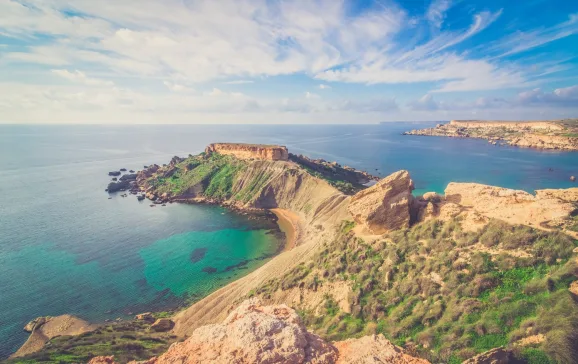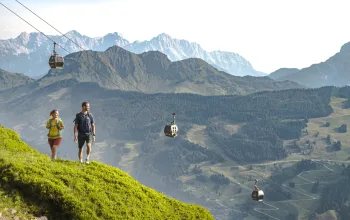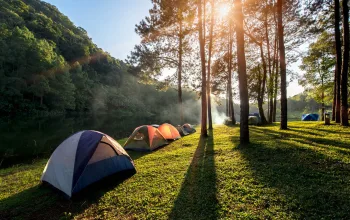Legends loom large over Alpe d’Huez. The 21 hairpins of this mountain climb will stir a glimmer of recognition in anyone who has ever caught the Tour de France highlights on TV, and for the faithful, they are holy ground - an open-air cathedral of cycling prowess.
The journey here from Lyon is deceptive. Rolling green hills pass by under blue skies, and from behind the car windscreen, it feels like a day out on the South Downs. Then comes a stretch of road, sandwiched between Chartreuse and Vercors, which is nothing like the South Downs at all: vertical columns of granite rise up to giant plateaux above us. It’s June, and the still-snowy peaks of the Alps beckon.
I’m here to join the legions of cyclists who come to Oisans to imitate their heroes, year after year. Riding the same roads as the professionals counts for a lot – and you can see their names scrawled on the tarmac from tours gone by – and a few canny local hoteliers have pulled out the stops to win two-wheeled business in the area by offering comfortable and bike-friendly accommodation for riders.
Beds for bikers
La Perle de l’Oisans, for example, in Vajuany, has devised a special package for those who want to sample a day in the cleated shoes of a professional. ‘Ride With a Pro’ does just as it suggests – putting guests out on the road with a (usually) retired pro rider.
Last season saw Jeremy Roy of FDJ and David Moncoutié of Cofidis leading rides, and this time I’m here to join Lucie Chainel-Lefèvre and her husband Steve Chainel; both French cyclo-cross (racing over mixed terrain) champions with national and world titles under their belts.
But first we settle in at La Perle, a top-level example of the local Accueil Velo scheme for accommodation. This star rating system for the cycle friendliness of places to stay was rolled out a few years ago: one star guarantees secure bike storage for guests, plus tools and a work stand; two stars adds laundry facilities, special meals and massage options; three means vehicle assistance, coaching possibilities and e-bike charging.

The scheme’s green logo makes planning a cycling holiday in the local area a lot easier. Shortly after arriving, the reception staff ask what I’d like for lunch. I think of the ride ahead.
“Something light, I think. A salad?”
Said salad duly arrives, with a healthy side order of steak and chips. This is France, after all.
Later I’m glad I devoured the lot, as what followed could only be described as a big afternoon: straight down the valley to Bourg d’Oisans to pick up riders and supplies, then onwards and up. Alpe d’Huez could wait until tomorrow; this was just a 43 mile warm up on steep surrounding roads, ably assisted by La Perle’s support vehicle, bearing snacks and spare parts behind us.
A taste of pro life
How can you spot a professional cyclist? Team riders are easy to recognise in reliably warm Mallorca or the Canary Islands, where their training camps are based in winter. They’ll pass you at a speed you barely thought possible, riding millimetres apart while holding an in-depth conversation, no need to pause for breath.
There are other tell-tale signs: audacious tan lines, a depilation regime that would put a Vegas showgirl to shame and an ability to perfectly match their day-glo shoes to their lycra. Truly, elite cyclists are a breed apart.
Steve, my ex-pro, may be retired but he still maintains the shaving and tanning regime: his arms, legs and face are the shade of an almond; his torso, a blanched almond.
Local bike shop owner Dany of Cycle et Sports reckons he can identify the nationality of each cyclist who pops into his workshop.
“The Dutch are easy-going - it doesn’t matter if their socks match,” he says.
Germans are technical tinkerers; Italians have flair and the fanciest gear:
“Once, three guys came into the shop with matching Colnago Ferrari bikes – worth around £6,600 each! Seeing one of those is rare enough, but three?!”
Brits, he says, are obsessed with fashion (all that matching Rapha), and Americans are impatient:
“Recently, one guy couldn’t understand why he had to wait for his bike to be fixed.
It was a busy time in the workshop and I told him, tough - "it’s one in, one out.”
![]()
One can see why Dany’s bike shop skills are in demand. A month after this trip, I return with my own bike on a tour with friends. My Sram S60 wheel had developed a buckle that had defied mechanics at London bike shops. (“It needs quite a specialist tool” they all said.) Dany has it trued in 40 minutes, on a Friday night, in between fitting a new groupset on a regular client’s bike. He is truly the Wizard of Oisans.
Race to the top
Now that I know how to look like a professional, it’s time to learn to ride like one. How fast can you corner safely? It takes me time to acclimatise to the gradient of the mountain roads and the radius of the turns, but by our second day of riding I’m chasing Steve and Lucie through lazy S-bends at 30mph, inching up the speed as I get used the bike and the terrain.
A mixture of terror, common sense and, finally, oncoming traffic convince me to slow it down. I hear the pleasing whir of new brake blocks as I gently pull the levers: we slow before the next corner then ricochet out the other side.
Taking the pace
Riding in the mountains is as much about testing the bike as your riding skills. I have the rare pleasure of riding a Pinarello Dogma rented from Dany, with a boxfresh Ultegra groupset shifting perfectly, braking smoothly and inspiring confidence as we fly around the hairpins.
It is exhilarating. If you do bring your own bike, bring it in its best self: if ever there is a time for fresh bar tape or a new set of brake blocks, this is it. If you’re unsure, book your pride and joy in for a service first. You won’t feel bad about any expense indulged on said bike as you spin the pedals on the climbs.
Beyond a thousand metres of ascent or 60 miles in distance no weight-saving gimmick, bail-out gear or aero advantage will feel like cheating. There are no easy days in the Alps, I learn; just hard work and ample reward for your efforts.
Back in the saddle and time for the arduous climb I’ve come here for, ascended by cyclists in 30 Tours de France before me. Steve makes it up Alpe d’Huez in 47 minutes. Lucie is annoyed; she wanted under an hour but makes it to the top in 1.02. I can share some of the blame – she kindly paced me around the endless hairpins and I come in at around an hour and a quarter, exhausted.

For the last six or seven bends, the ski resort at the top looks enticingly close, but feels further from my reach with every tortured pedal stroke.
Later, after a long slog back to the Perle, I suggest to Steve that this must have been an easy day for him.
“No! it’s never easy; it still hurts!”
Does he miss the pro life? The thrill of competition?
“No, I don’t miss competing at all. The pro life is a bubble. You don’t do anything else, talk about anything else; just live in that professional cycling bubble the whole time. This is the real life.”
The selection of cheeses and charcuterie on the sunny terrace of Le Perle are no doubt preferable to the pros’ post-ride regime: an ice-bath and a bowl of pasta.
“The professional’s schedule – it’s like being a baby. You eat when you are told and sleep when you are told; there are people looking after you the whole time. I’m 33 years old; if I want to eat now, I’ll eat now!”
Steve and Lucie have matching tattoos inside their sinewy forearms, between wrist and elbow: Fortis in arduis. Strength in difficulty. Strength will certainly come if you cycle in this part of the world for long. The difficult bit is leaving. Sitting on the sunny balcony of my room, watching the sun flare pink as it sets behind Alpe d’Huez and the climbs we’ve conquered, it’s hard not to agree with Steve: this is the life.

Four more Tour de France Climbs
Col du Galibier, 2,646 metres
The famously tough Col du Galibier is the highest point on the tour and includes multiple switchbacks and far-reaching mountain views across to the Meije, the last major Alpine summit to be conquered by mountaineers..
Col de Peyresourde, 1,569 metres
Beautiful, winding and flanked on both sides by lush green valleys, the views on Peyresourde are worth the screaming calf muscles. One for cyclists searching for pleasure as well as punishment.
Le Mont Ventoux, 1,912 metres
At times this rocky, barren nightmare of a climb feels like cycling on the moon. A Tour de France classic since 1951, the notoriously difficult steep slog includes five miles of 9% gradient. Not one to attempt in the midday sun.
Col du Tourmalet, 2,115 metres
Perhaps unfairly called the ‘circle of death’, this consistent climb has been a classic leg of the Tour no less than 81 times, with each hairpin sporting cheering crowds - you might have to just imagine them if you go it alone.

Travel Info
Health & safety
Emergencies are covered by the European Health Insurance Card but we also recommend travel insurance.
What to pack
Helmet, sunglasses, spare base layers and a waterproof and windproof jacket.
Our trip
Chalet La Perle de l’Oisans offer a six-day Ride With A Pro package from £750 half board for four days supported riding.
Thanks to Cycles et Sports in Bourg d’Oisans forbike servicing.
Fancy a challenge?
Forever Cycle Tours’ eight day Icon 10 Cols trip takes on Alpe D’Huez as well as nine other epic French climbs for £1,695 half-board.
Getting there
EasyJet flies daily to Lyon and Geneva from £53 return.









